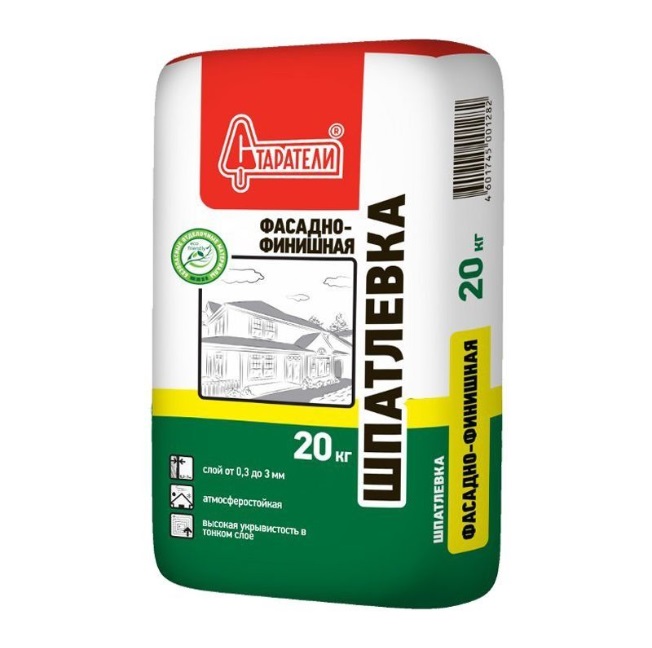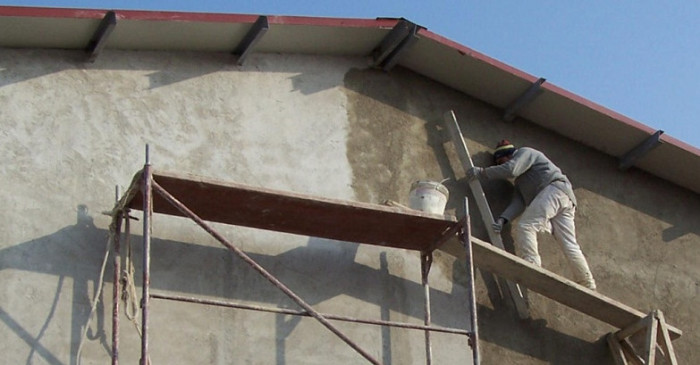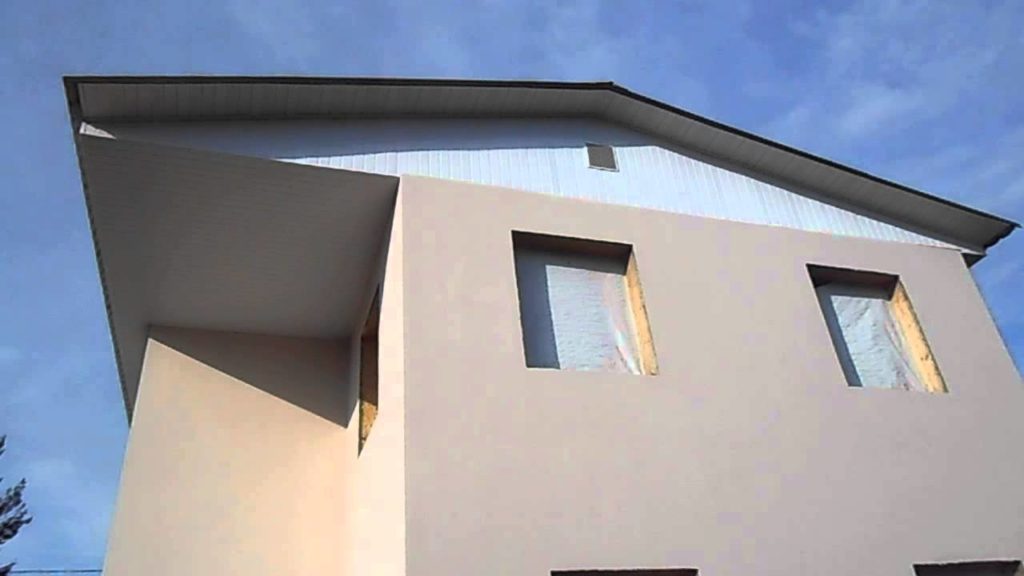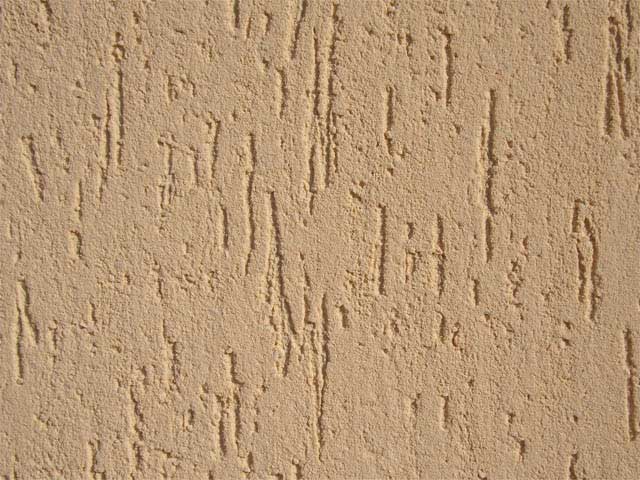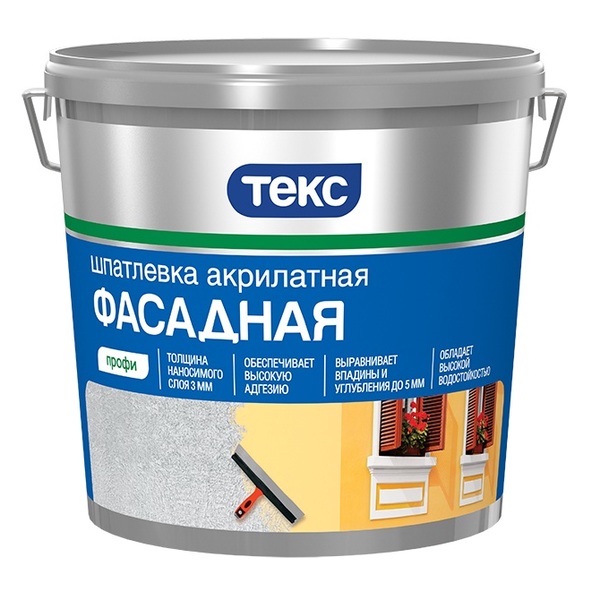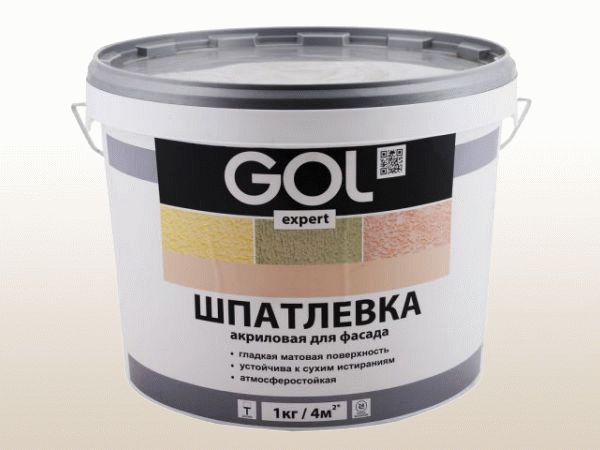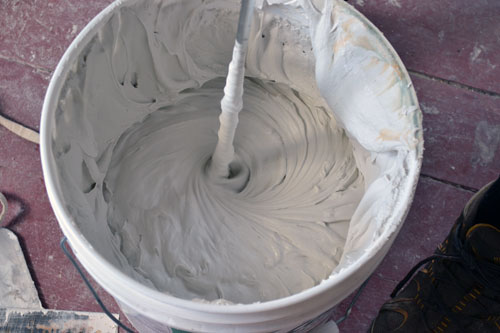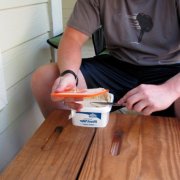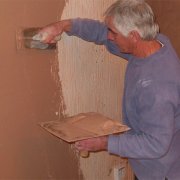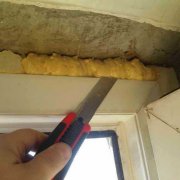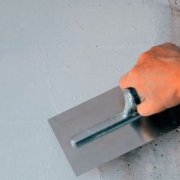Facade putty
Puttying the facade - the stage of finishing the house from the outside. If you choose the right tool and adhere to the rules of the work, the structure will acquire a beautiful appearance for a long time.
The content of the article
Why put putty on the facade?
Many bases are hygroscopic. These include wood, brick, aerated concrete and others. Such bases absorb moisture and the surface peels off over time. As a result, the climate inside the house ceases to be comfortable. The air becomes cold and damp. Not only moisture is detrimental to the construction base. Ultraviolet radiation and temperature changes also destroy the surface. To prevent this, the base is recommended to protect. Professional craftsmen are advised to use facade putty. The composition will provide surface hygroscopicity and protection against negative weather effects. The material will insulate the structure, so that there will be comfortable climatic conditions inside the building. Facade putty also levels the surface. This will prepare the building for subsequent finishing.
Facade Composition Requirements
Putty for the facade should have the following characteristics:
• plasticity, which will ensure easy application of the product;
• high adhesion, due to which the composition will stay on any kind of surface;
• strength to protect the material from mechanical damage;
• easy grinding to level the surface.
In addition, the material should be easily coated with paint and other finishing composition. Another requirement for facade puttying is drying without the formation of defects. If cracks appear after solidification, the work will have to be redone.
Types of material
Which facade putty is better is the question that arises among amateurs. This is not surprising, since manufacturers offer different types of material.
Intended classification
Depending on the purpose, the following varieties of putty are distinguished:
• Basic tool. Another name is starting putty. The composition is used for the primary processing of the facade in order to repair cracks and eliminate surface drops. The product contains large fractions that are difficult to grind, so the material cannot be used immediately before finishing.
• Finishing lineup. The tool is used for the final leveling of the building foundation. Finishing facade putty contains fractions of small sizes, so the material is easy to grind. The tool is applied to the starting material. However, if the surface is quite smooth and without defects, then you can do without the basic composition.
• Universal product. It contains medium sized fractions, therefore it is used as a starting or finishing agent.
• Decorative putty. The main purpose of the material is the aesthetic design of the facade. The product also protects the surface from the negative effects of the weather (rain, sun and frost). Putty for outdoor work "Bark beetle" is very popular. The product creates an unusual texture on the surface. After solidification, the base becomes similar to the tree that the bark beetle exuded (as in the photo below). This effect is achieved due to marble chips, which is part of the product. However, you can choose another decorating product.
• Material for wooden houses.Recently, professionals have identified such a tool in a separate category. The composition provides surface waterproofing and vapor permeability.
Varieties in composition
Putty for facade work in composition has the following varieties:
• Cement agent. Recommended for use on brick and concrete surfaces. Advantages - frost resistance, reasonable price. Disadvantages - it shrinks and if it solidifies quickly, then defects will appear on the surface.
• Acrylic material. Use as finishing putty for any type of building base. The tool is released in finished form. Advantages - increased strength, ease of use. The disadvantage is the high price.
• Acrylate composition. The product is released in finished form. Advantages - strength, increased water resistance. The disadvantage is the high price.
• Silicate product. The tool is usually used for cellular concrete and shell materials as a decorative coating.
• Oil and glue material. Professionals advise using the product for wooden surfaces. Advantages - increased frost resistance, strength and reasonable cost.
Features of choice
When the question arises of how to putty the facade of the house, the main thing is to choose a tool intended for the facade or outdoor work. In addition, the composition should be suitable for the surface material. Professionals are also advised to watch the date of manufacture of the product. It is recommended to purchase the material that was produced shortly before the start of the repair.
Expense of funds
The consumption of facade putty per 1 m2 depends on the type of surface, means, and also the thickness of the layer. The exact numbers are indicated by the manufacturer on the packaging. The consumption of facade putty is from 0.7 to 1.8 kg per 1 m2 with a layer thickness of 1 mm.
Solution preparation
If a finished product is used to repair the facade, then the product is used immediately after opening the bucket. The material is used after opening the package. If a dry mixture is used, then the solution will have to be prepared with your own hands:
• put the product in a bucket;
• add water in the proportions indicated on the package;
• Replace the composition with a construction mixer;
• Let the product brew for 15 minutes and mix the solution.
Application Technique
Puttying the facade of the house is carried out in two ways.
By the lighthouses
This method of puttying is used for surfaces with large differences. If you immediately use the composition, then the expense will be large. Professionals are advised to first apply plaster on the base.
Work algorithm:
• Using cement mortar, fix metal strips on the wall on both sides. After that, pull the threads between them. Two or three are enough. Set these bars for these marks. The distance between them is one meter.
• Dampen the surface with water if it is hot outside. In cool weather, you do not need to manipulate.
• Apply plaster to the wall so that the composition does not extend beyond the beacons. To do this, take the rule and smooth the mixture.
• Remove the metal strips. Fill the resulting voids with plaster. After the composition has dried, clean the surface.
• Apply a primer to the material in two layers. After each application, take a break to dry the primer.
• With a narrow trowel, put the finishing putty on the wide trowel. Apply the composition to the wall. When the surface is treated, wait for the material to dry.
• Sand the base with sandpaper or special mesh. Sweep dust off the surface and apply a primer. After the primer has dried, finish.
With reinforcing mesh
Reinforcement professionals are advised to use if the surface of the walls is even and if insulation is used (for example, polystyrene foam).
Putty Instructions:
• Apply adhesive to the wall. It is recommended to use facade glue on a cement basis.
• At the corners, fix the plastic corner with reinforcing mesh. To do this, press it against the wall and slide it with a spatula so that the corner and net "drown" in the adhesive.
• Attach a fiberglass mesh to the surface. To do this, cut off the required amount of material, attach it to the wall and slide it with a spatula on top over the entire surface.
• Apply the starting compound to the wall. Wait until the product hardens and clean the surface. Sand the dust and apply the primer in two layers with a break for drying.
• Put the finishing agent on the base. After drying, grind and overlay the surface.
• Prime the base. After the primer has dried, finish.
The video in this article demonstrates how to properly putty the composition.
When filling the facade is done, it is important to do the work with a suitable tool and strictly according to the rules. In this case, there will be no problems with wall decoration.
